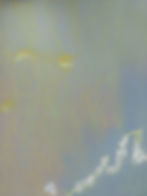Painting light - how to capture luminous light with pigment
- Shawn Dell Joyce artist
- Oct 6, 2019
- 2 min read
Light is the main reason I paint. The beautiful patterns of light and dark, the shafts of sunlight against the dark of a cloud, the way sunlight breaks through the trees etc. It's also one of the most difficult things to capture. Mainly because you are using something dense like pigment and liquid like paint to capture something more like a gas-lumens.
The best way to capture light is by showing its opposite in the same frame; dark. You can't have light without dark. Beginners make the mistake of painting everything too light and not showing the dark. But if you really want to see the light, then you have to use darks to set the stage so the light can really be seen.

Using paint to capture light is like trying to catch a greased pig. Paint is liquid, dense and would have to be applied in layers to create luminosity. Pastel (in my opinion) is the perfect medium for painting light.

Pastel is the only medium where you can scumble light on top of dark without waiting for paint to dry. You can scumble different colors to create multi-colored light which is what a sunset is. Here's an example of layers of pastel scumbled to create multi-colored light.
Oil can be thinned with linseed oil or Gamisol and applied in thin layers to create luminous light, but this takes great time and patience. Acrylic can also be thinned to watercolor consistency or mixed with a retarder or gel medium to create layers of pigment and light.
Here's a detail showing just the section of light close-up. I'm not saying you can't do this with paint, just that its much more difficult than with pastel.

Want to add more light to your work? Pay closer attention to the values around the light. Here's a few suggestions:
-make sure you have a full range of values, especially darks so that nothing competes with the light!
-do cloud studies first so that you learn how not to paint it, before jumping into a painting.
-try using different media to achieve the same effects (work from the same reference photo or subject in multiple media)
-keep light colorful! light is not just white, it's yellow, pink, orange, blue, etc.

Still not sure? Take a class. I offer a class in painting cloudscapes, sunsets, and water reflections starting this Tues. Oct. 8 from 1-4pm. You can attend remotely from your home or in person at Beach Art Center. Email me and I'll send you a link.
Happy painting!



